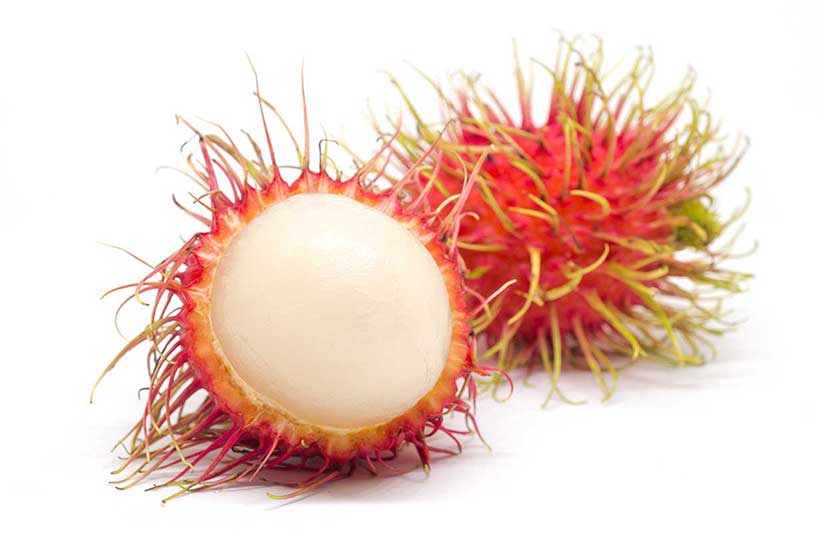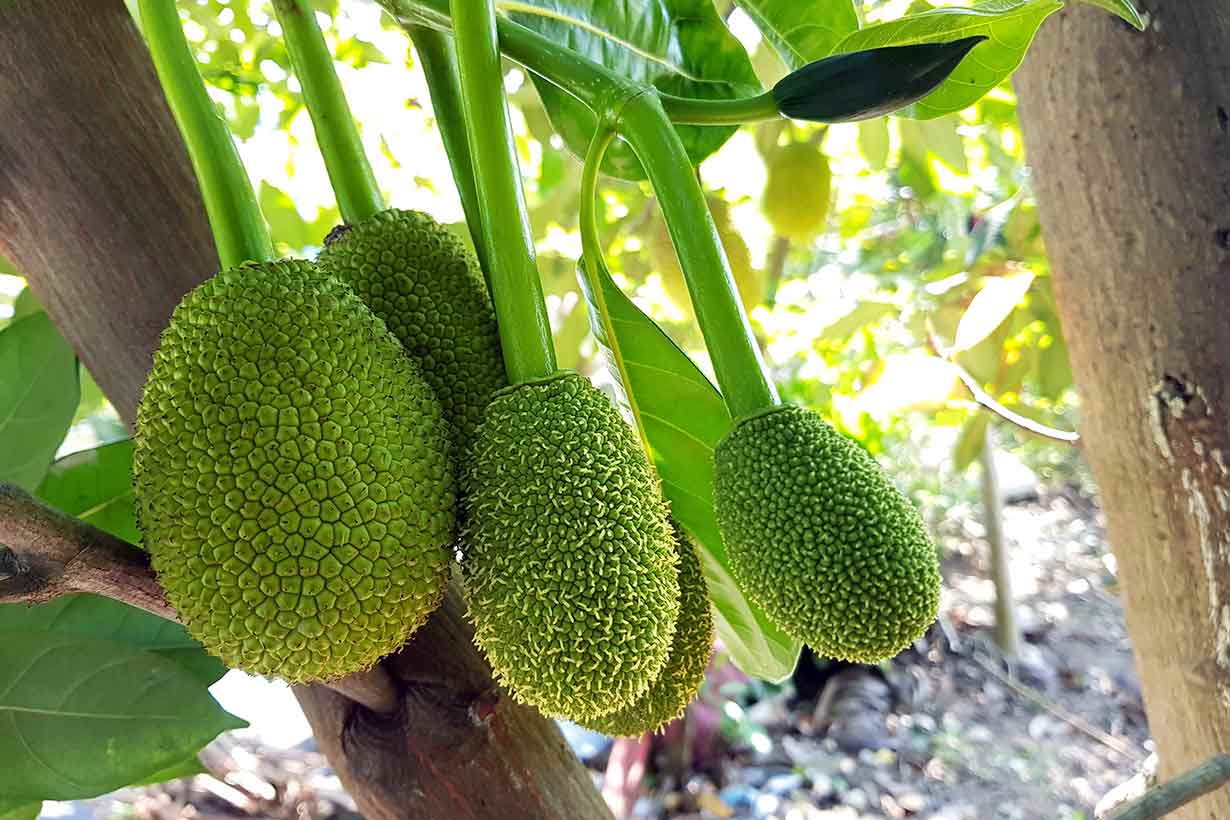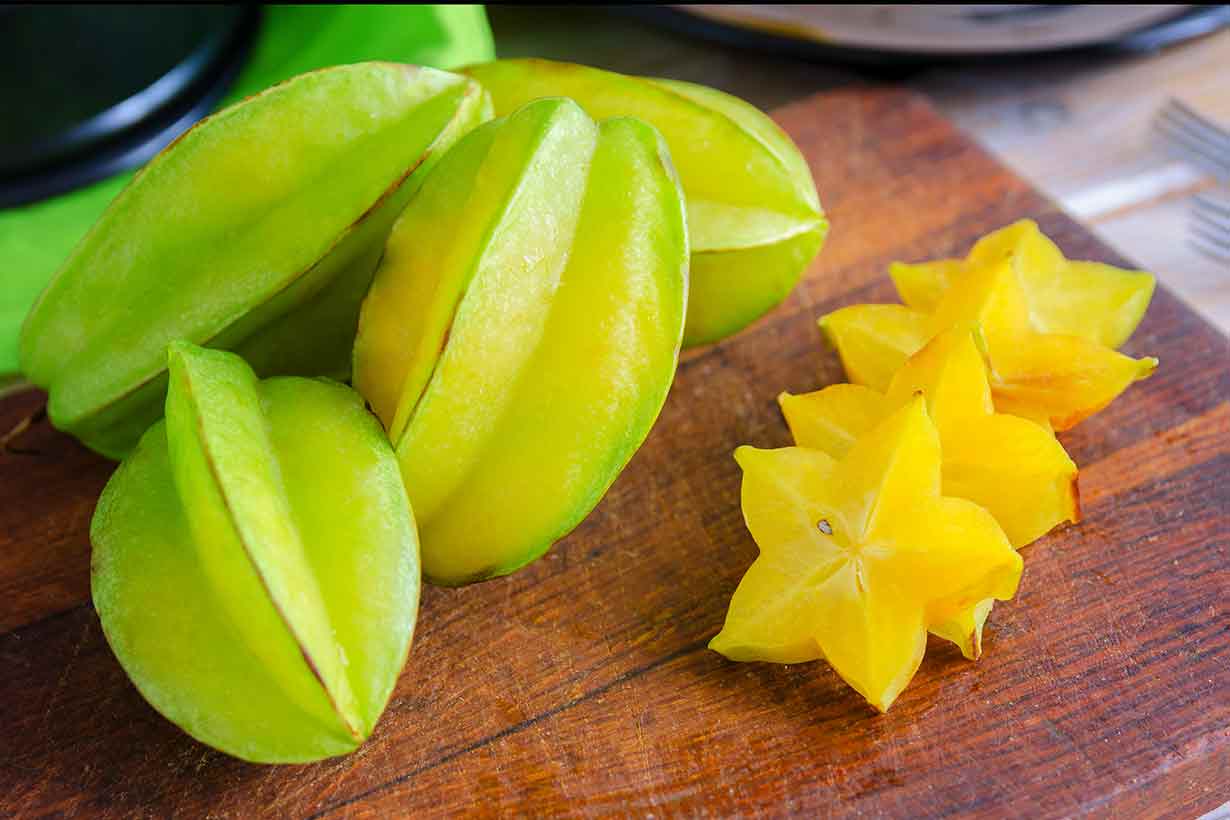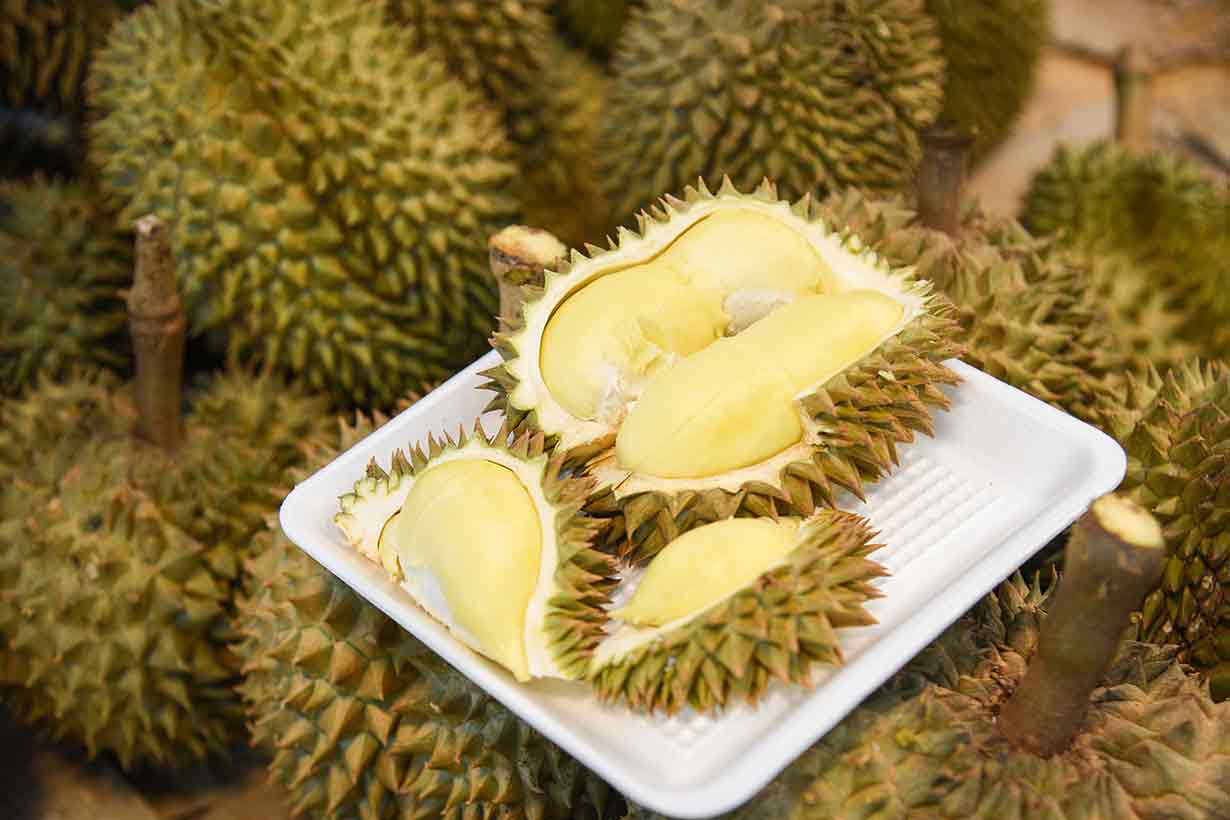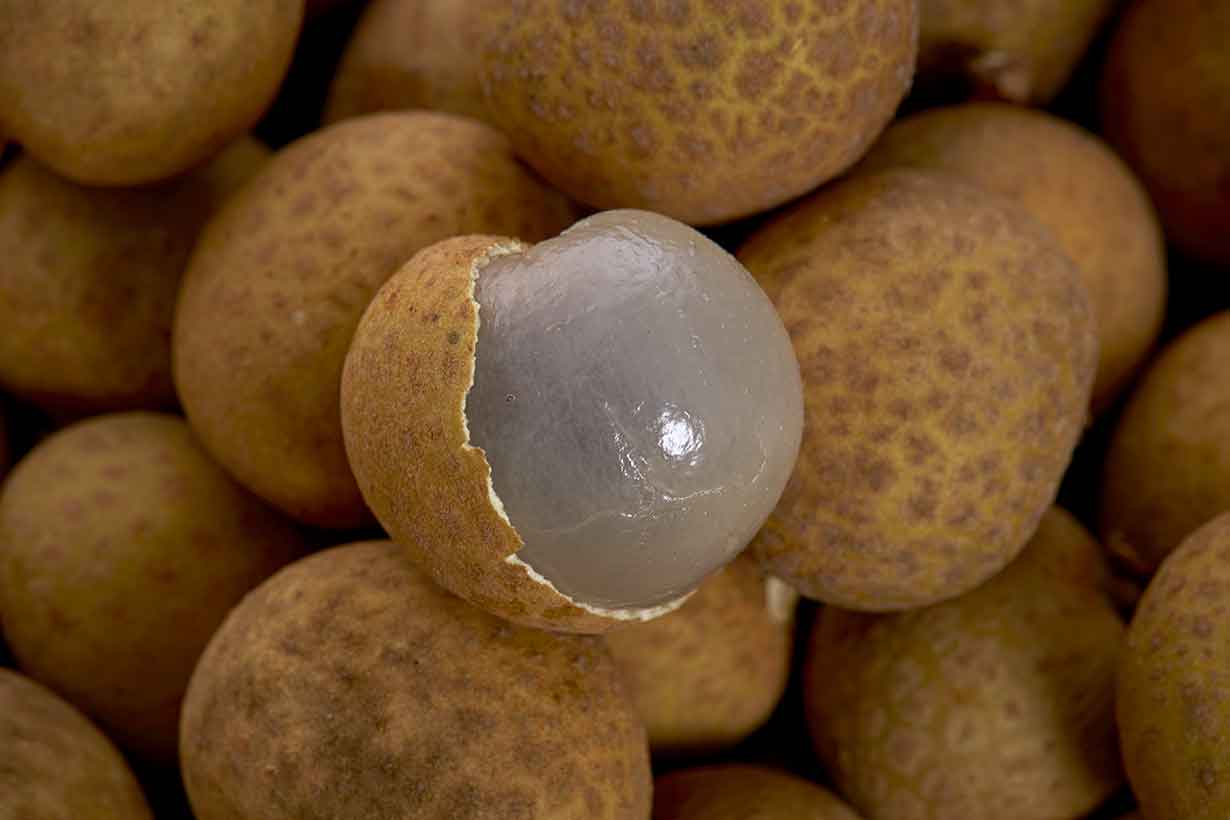Papaya is a delicious tropical fruit, and it is a rich source of nutrients.
In fact, among all commercial fruit, papaya has one of the most impressive nutrition profiles.
This article looks at the benefits of papaya and its overall nutritional values.
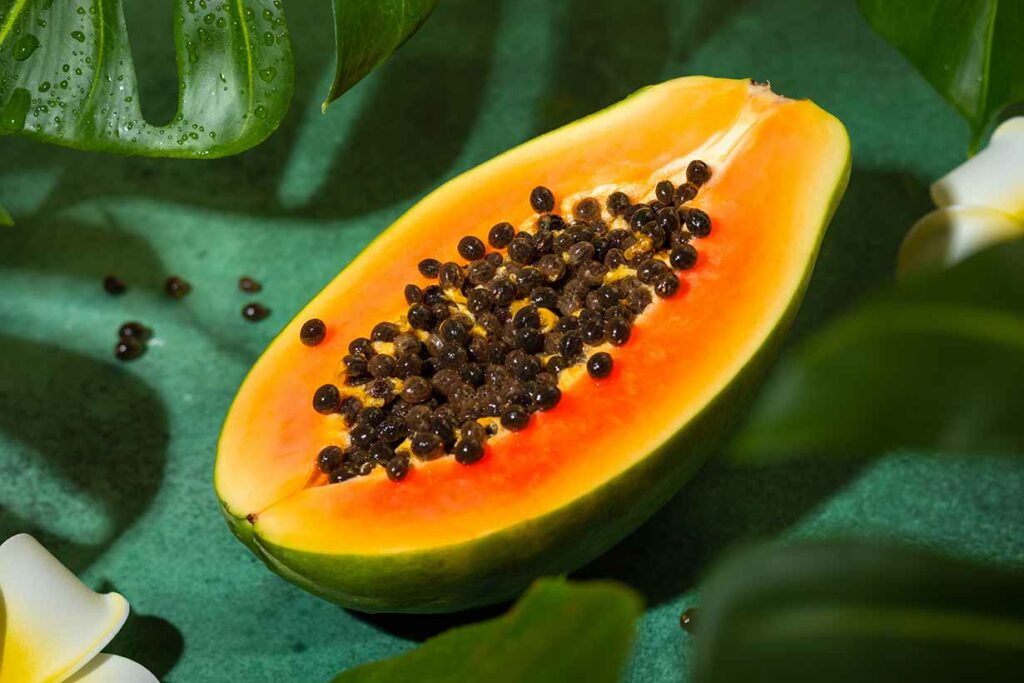
Table of contents
What Is Papaya?
Before we examine the nutritional properties of papaya, let’s first learn some more about its characteristics.
Payapa has the scientific name of Carica papaya linn, and it is a popular fruit that grows in tropical regions around the world (1).
Research suggests papaya originated in Central America, but most global production occurs in Asia. In 2018, India alone provided 45% of global papaya production (2).
Papaya has yellow to orange-red flesh depending on the stage of maturity and the specific variety of the fruit. There are many different varieties of papaya that grow worldwide (3, 4).
The flesh of papaya has a sweet taste, and it is soft and juicy. However, it is much less sweet than other tropical fruits like mango and pineapple.
Papaya is slightly like a melon in taste and texture, but it has a unique and distinct flavor.
In the middle of papaya’s flesh are hundreds of edible seeds, and they have a peppery and slightly bitter taste.
Interestingly, som tam (also known as ‘papaya salad’) featured in CNN’s ‘world’s 50 best foods’ at position six (5).
Nutrition Facts
What does one regular-sized papaya provide nutritionally?
The following table contains the full nutritional values for one papaya fruit (330g), using data sourced from the USDA’s FoodData Central database (6).
All daily values are based on a 2000-calorie diet and were calculated using USDA data and the FDA’s published daily values (7).
| Name | Amount | % Daily Value |
| Calories | 142 kcal | 7% DV |
| Carbohydrates | 35.6g | 13% DV |
| Fiber | 5.61g | 20% DV |
| Sugars | 25.8g | |
| Fat | 0.86g | 1% DV |
| Saturated | 0.27g | 1% DV |
| Monounsaturated | 0.24g | |
| Polyunsaturated | 0.19g | |
| Omega-3 | 0.16g | |
| Omega-6 | 0.03g | |
| Protein | 1.55g | 2% DV |
Vitamins
- Vitamin C: 248% of the daily value
- Folate: 31% DV
- Vitamin A RAE: 17% DV
- Riboflavin (B2): 7% DV
- Niacin (B3): 7% DV
- Vitamin B6: 7% DV
- Vitamin E: 7% DV
- Vitamin K: 7% DV
- Thiamin (B1): 6% DV
- Choline: 4% DV
- Vitamin D: 0% DV
- Vitamin B12: 0% DV
(RAE = retinol activity equivalents)
As shown, papaya is an excellent source of vitamin C, and it is also high in folate and vitamin A.
The amount of vitamin C is significant, and it is more than double the recommended daily value.
Minerals
- Magnesium: 17% DV
- Copper: 16% DV
- Potassium: 13% DV
- Calcium: 5% DV
- Iron: 5% DV
- Selenium: 4% DV
- Phosphorus: 3% DV
- Zinc: 2% DV
- Sodium: 1% DV
Papaya provides a range of minerals, and it is an excellent source of magnesium, copper, and potassium.
Benefits
Based on papaya’s nutritional values and scientific research, here is a look at some of the fruit’s benefits (and potential benefits).
1) Papaya Is An Excellent Source of Vitamins and Minerals
If we look at the nutrition profile of papaya, we can see it contains a broad range of vitamins and minerals.
One medium-sized papaya fruit provides more than 10% of the daily value for six micronutrients: vitamin C, folate, vitamin A, magnesium, copper, and potassium (6, 7).
Each of these essential vitamins and minerals is important for different reasons:
- Vitamin C has antioxidant properties, and a high intake from dietary sources may potentially lower cardiovascular disease and cancer risk (8).
- Folate is important for the production of DNA, and it plays a key role in healthy pregnancies. Some research also suggests it may decrease the risk for several types of cancer (9).
- Vitamin A has antioxidant properties, and it is has a vital role in the immune system and maintaining healthy vision (10).
- Magnesium is a mineral that helps to regulate many processes within the body, including blood pressure. Sufficient intake of the mineral may lower the risk of chronic health conditions including type 2 diabetes and osteoporosis (11).
- Copper has numerous important functions throughout the body. Among these, the mineral plays a key role in brain development, the immune system, and the nervous system (12).
- Potassium is an important mineral that has many roles within the body. Among these, one of its key functions is to regulate blood pressure alongside sodium. Higher potassium intakes can help to lower blood pressure (13).
Further to these nutrients, a papaya fruit offers between 5 and 10% of the daily value for eight more vitamins and minerals (6, 7).
Other tropical fruits, such as cherimoya and durian, also offer a broad range of essential nutrients.
For more information on these specific fruits, see this guide to cherimoya or this article on durian.
2) Papaya Contains a Range of Bioavailable Carotenoids
There are two ways of getting vitamin A from dietary sources: provitamin A carotenoids and retinol.
Retinol is known as ‘preformed’ vitamin A, available from animal foods. In contrast, some plant foods contain provitamin A carotenoids, which can convert to retinol within the body (14).
However, some carotenoids have their own benefits despite not converting to vitamin A.
These non-vitamin A carotenoids include lutein, lycopene, and zeaxanthin (15).
Notably, papaya is one of the best dietary sources for lutein, lycopene, and zeaxanthin. One papaya fruit provides (6):
- Lycopene: 6040 mcg
- Lutein + zeaxanthin: 294 mcg
Systematic reviews of the existing research literature have demonstrated that lycopene may help to lower the risk of various cancers, metabolic syndrome, and cardiovascular disease. However, much of this research is observational, and further data from human clinical trials are necessary to understand further (16, 17, 18).
Meanwhile, lutein and zeaxanthin are essential for vision. A 2021 systematic review and meta-analysis that reviewed 46 human clinical trials, including 34 randomized controlled trials, found that (19):
- Daily total lutein/lycopene intake of >10mg noticeably improved macular pigment optical density (MPOD), an important marker of lutein and zeaxanthin levels within the eye.
- The effect of lutein/zeaxanthin intake below 10mg per day on MPOD was unclear.
Research has shown that MPOD is strongly associated with better visual function outcomes (20).
However, an important point to note: 10mg per day of lutein/zeaxanthin would equal eating more than thirty papaya fruit.
Carotenoids have yellow to red pigments, and their concentration in papaya increases as the fruit ripens. This is why the flesh of papaya progressively changes color during the ripening process (21).
For another carotenoid-rich tropical fruit, see this article on mamey sapote fruit.
3) Papaya Is High In Fiber
Papaya is a fiber-rich fruit, making it a good choice for anyone wishing to increase their fiber intake.
On this note, just one fruit provides 5.6 grams of dietary fiber, equivalent to 20% of the recommended daily value for fiber (6, 7).
Dietary fiber has many important benefits for human health.
Most notably, several extensive systematic reviews have found that the highest intakes of fiber are associated with lower cancer, cardiovascular, and all-cause mortality (22, 23, 24, 25).
Further confirming these potential benefits, an umbrella review of existing systematic reviews on fiber and health outcomes found that (26):
- A relationship between higher fiber intake and lower risk of mortality from cardiovascular disease, all causes, and several cancers.
- There were “convincing and suggestive evidence” for a relationship between greater fiber intake and lower risk of a range of chronic diseases. However, that future randomized controlled trials are necessary to confirm these observational findings.
4) Studies On Fermented Papaya Extracts Found Improvements In Antioxidant Status and Various Health Markers
Fermented papaya preparation (FPP) is an extract of papaya that has undergone a yeast fermentation process, sold as a commercial supplement (27).
Interestingly, several studies have suggested that FPP may potentially have beneficial properties:
- Cell (test tube) and animal studies found that FPP had anti-inflammatory properties (28, 29, 30, 31).
- In a randomized controlled trial featuring 127 patients with diabetes, FPP supplementation improved antioxidant status and markers of health, such as C-reactive protein and blood pressure. However, the researchers could not be certain these results were due to the FPP and more research, with higher doses and a larger study population (32).
It is important to note that the above studies feature in this article for informational purposes. However, they do not offer convincing proof for these effects within humans.
Furthermore, supplementary papaya extracts are not the same thing as eating the whole papaya fruit.
Thus, it isn’t easy to ascertain how relevant these studies are when discussing the effects of whole papaya fruit.
5) Papaya Is Versatile and There Are Many Ways To Eat It
While many people visualize the orange flesh of papaya fruit, it can be eaten at various stages of maturity.
For example, papaya can also be eaten as a vegetable in its immature (unripe) phase when the flesh is still green. Among the potential uses for green papaya, it can be pickled or used in various curries, soups, and stews.
‘Green papaya salad’ is an extremely popular way to eat green papaya, and it is a dish consumed throughout South-East Asia.
The dish features green papaya, chilli, fish sauce, lime, and palm sugar, and it may also contain several differing and additional ingredients (33).
Also, the black seeds that papaya contains are perfectly edible, but they have a slightly spicy and pungent flavor.
Interestingly, these papaya seeds can be dried and then ground into black granules as a like-for-like black pepper replacement. It is easy to do this from home; if this appeals, there is a WikiHow guide on how to do so here.
Papaya seeds also contain a range of protein, fiber, healthy fats, and vitamins and minerals. Blending the seeds into a smoothie or mixing them with yogurt are two other ways to consume them.
Final Thoughts
Papaya is a delicious fruit with an interesting taste, and it offers a good range of nutritional benefits.
From the fruit’s fiber content to its range of vitamins and minerals, papaya offers a broad range of essential nutrients.
Papaya is also versatile and can be used in various interesting ways for those who like trying new recipes.


